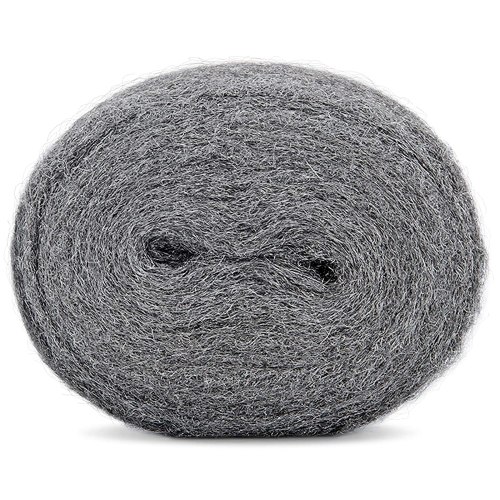Our editors independently select these products. Making a purchase through our links may earn Well+Good a commission
Twice per year, the National Pest Management Association (NPMA) releases a Bug Barometer forecast, projecting the pest activity in the United States based on weather patterns, long-term forecasts, and other biological behaviors. Brittany Campbell, PhD, staff entomologist and research scientist at NPMA, says the latest forecasts are grim for people trying to keep bugs out of the house.
Experts in This Article
staff entomologist and research scientist for the National Pest Management Association (NPMA)
Josh Matta, MS is an entomologist and senior biologist for Spectrum Brands.
“In March of 2021, our forecast indicated that wet spring and summer conditions predicted for much of the U.S. would contribute to spikes in pest populations nationwide. As predicted, the bitter cold weather that most of the U.S. faced last winter was followed with the warm weather we’re currently experiencing,” says Dr. Campbell. “It’s likely that folks living in regions with hot, rainy summer weather are noticing an uptick in the presence of disease-transmitting pests like ticks and mosquitoes, who thrive in these conditions. Additionally, there are other moisture-loving pests such as termites, ants, and cockroaches that are likely to pop up in areas with warm, wet weather.”
When dealing with insects, it’s important to differentiate between friendly critters and harmful pests. “Not all bugs are pests!” says Dr. Campbell. Green lacewings, ladybugs, and ground beetles shouldn’t alarm you, though “it’s important to keep an eye out for infestations,” she says. “On the flip side, there are various vector pests, such as mosquitoes, ticks, rodents, cockroaches, and fleas, that can transmit disease to humans.”
If you think you’ve got an infestation on your hands, Dr. Campbell says it’s best to hire professional exterminators. If you’re renting, review tenant laws in your area as your landlord may legally have to provide pest management. But if you are dealing with a small number of bugs and think you can handle them on your own, there’s more than one way to manage the problem depending on the type of bugs that want to take up residence in your house.
What you need to prevent insect infestations
Among other preventative measures, sealing holes and gaps is the first step. Grab a caulk gun ($9), caulk, and steel wool ($17 to $21) to aid in that process. Additionally, keep spray ($4) on hand for killing bugs on contact.

Bates Caulking Gun — $9.00
If you’re dealing with pests, a caulking gun will become your best friend. Though it looks intimidating, it’s pretty simple to use. The caulk, however, you have to buy separately. From water-resistant to paintable to quick-dry, there are tons of different types of caulk. Be sure to select the right one for your space and your needs.

Steel Wool Roll — $17.00 to $21.00
This roll of steel wool, available in 20-foot and 40-foot versions, is great for filling big gaps that would require much more than caulk to seal.

Hot Shot Ant, Roach & Spider Killer Insecticide — $4.00
If you’re dealing with ants, roaches, or spiders, Josh Matta, MS, an entomologist and senior biologist for Spectrum Brands, recommends this killer from Hot Shot, which is a Spectrum Brands product.
Butter Yellow Is the Color of the Season—Get In on the Mellow Moment with These 5 Budget-Friendly Finds from Walmart

Butter Yellow Is Taking Our Closets By Storm—Here’s How To Add It To Your Workout Wardrobe

Want To Transform Your Outdoor Space into a Calming, Boho-Chic Escape (Um, Yes)? Start with These Steals

How to keep different bugs out of your house with routine maintenance
1. Cockroaches
“Cockroaches congregate in warm, damp places where food and water are readily available, like kitchens and bathrooms,” says Matta. “If you suspect an infestation, check out the spots where water enters and exits your home, like along and behind pipes and inside cabinets under your sinks. To reduce infestations, caulk or use steel wool to close up these entry points and practice good sanitation by wiping down countertops after you prepare food, sealing food containers, and keeping trash cans closed and emptied often. Outdoors, trim shrubs and move woodpiles away from your house to reduce shelter for cockroaches.”
2. Mosquitos
“Still, stagnant water attracts mosquitoes that can transmit harmful viruses,” says Dr. Campbell. “This can happen in as little as half an inch of standing water—think about a water bottle cap. People can reduce the threat of mosquito-borne disease by eliminating various sources of standing water around their properties, which are ideal breeding grounds for this insect. Walk around your property once a week to dump stagnant water sources, paying attention to birdbaths, kid toys, pool covers, tires, planters, and drainage areas. Property owners can also clean out gutters that hold debris or leaves and screen windows and doors.”
3. Ants
“Ants can live for a long time without food but can’t survive even one day without water, so they venture indoors seeking moisture,” says Matta. “Seal off ant entry points by caulking around windows, doors, and openings where utility pipes enter your home. Seal food in the kitchen, sweep and vacuum often, and wipe off countertops after preparing food. Don’t leave pet food or water out continuously and fix leaky pipes and faucets. Outdoors, keep landscaping trimmed several inches away from your foundation.”
4. Houseflies
“Houseflies are highly attracted to sugary human foods and human activity. Gray with yellow-brown coloring on their sides, these pesky nuisance insects get in through open windows, doors, cracks, and crevices and stay because they can’t find their way out,” says Matta. “Keeping food in sealed containers, keeping trash containers closed, and making sure window screens are in good working order can help reduce housefly activity.”
5. Stinging insects, like wasps and hornets
“Be sure to regularly check gutters, windows, grilles, porch lights, etc. for stinging insect activity,” says Dr. Campbell. She says they build nests in and around solid surfaces outside the home and sometimes on the ground and inside shrubs and bushes. “If you find a nest on your property, stay away and alert other family members to keep a safe distance. Stinging insects send more than half a million people to the emergency room every year so please avoid getting too close or attempting to remove the nest on your own. You need to call a pest control professional.”
To prevent contact with stinging insects, Dr. Campbell says there are a few things you can do. “Clean up any crumbs or spills, and cover all food items at outdoor events that could attract stinging insects,” she says. “Avoid wearing dark colors, floral prints, and sweet-smelling perfume or cologne when spending time outdoors. “[And] seal cracks and crevices in the home with an appropriate sealant, repair any tears in screens, and try to keep doors closed to help prevent stinging insects from entering the home.”
6. Spiders
“Closing insect entry points will help keep spiders out,” says Matta. “Check seals and weather stripping around doors and windows and caulk any openings you might find. Remove outdoor woodpiles and cut back climbing vines and overgrown shrubs around your house so spiders can’t use them to access your home. Remove any visible webbing outside and inside, especially around windows and in corners. Be careful in places black widow, brown recluse, or hobo spiders are known to infest. Seek immediate medical attention if bitten by a spider.”
7. Bed bugs
“Discourage bed bug infestation by keeping clutter picked up, washing bedding and upholstery routinely, and not buying used furniture,” says Matta. When you’re traveling, Dr. Campbell says to thoroughly inspect the room before unpacking including, behind the headboard, under lights, and inside dressers, sofas, and chairs.
“Pull back sheets and inspect mattress seams and box springs, particularly at the corners, for telltale stains or spots,” she says. “Carry a small flashlight ($7) to assist you with visual inspections.” Matta also advises keeping your belongings in your suitcase, not unpacked in dresser drawers and sealing dirty laundry in plastic bags that can be taken straight to the laundry room at home.
When returning home from a trip, camp, or college, Dr. Campbell says to vacuum and properly inspect suitcases and belongings before bringing them into the home and to wash and dry all clothes—even those that have not been worn—on hot cycles.
8. Ticks
When you’re going to be in wooded areas or tall grasses, Dr. Campbell says to wear long pants, long-sleeved shirts, and closed-toe shoes; all in light colors, which makes it easier to spot ticks and other insects. Plus, wear a bug spray ($6) containing at least 20 percent DEET when outdoors, and reapply as directed.
“When hiking, stay in the center of trails, away from vegetation. Keep grass cut low around the property and remove weeds, woodpiles, and debris, which can attract ticks and other pests,” says Dr. Campbell. “Check yourself and your pets for ticks regularly before coming indoors, especially if you’ve been in high grass or wooded areas. If a tick has latched on, be sure to completely remove it from the bite mark using fine-tipped tweezers, paying close attention to carefully extract the head. Wrap the tick in tissue and flush it down the toilet. Then, thoroughly wash the bite site with warm soap and water. Be on the lookout for signs of tick bites, such as a telltale red bull’s eye rash around a bite. If you suspect a tick has bitten you, seek medical attention.”
9. Termites
“Termites thrive in moisture-heavy settings, so eliminating or reducing moisture in and around the home can be a huge help,” says Dr. Campbell. Be mindful of any ways water can enter and-or move through your home. Repair leaking faucets, water pipes, and exterior AC units. Repair fascia, soffits, and rotted roof shingles; and replace weather-stripping and loose mortar around basement foundation and windows. Maintain an 18-inch gap between soil and any wood portions of your home and avoid using mulch up against the exterior of structures. Additionally, store firewood at least 20 feet away from the house.
“Routinely inspect the foundation of a home for signs of mud tubes (used by termites to reach a food source), piles of termite frass, and wood that sounds hollow when tapped. Monitor all exterior areas of wood, including windows, doorframes, and skirting boards for any noticeable changes,” says Dr. Campbell. “Consider scheduling a professional termite inspection annually. Wood-boring insect damage is not covered by homeowners insurance policies and can lead to expensive repairs.”
Oh hi! You look like someone who loves free workouts, discounts for cutting-edge wellness brands, and exclusive Well+Good content. Sign up for Well+, our online community of wellness insiders, and unlock your rewards instantly.
Sign up for the Well+Good SHOP Newsletter
Get exclusive deals on wellness, beauty, fitness, and food products that have been hand-picked by our editors.
Got it, you've been added to our email list.





